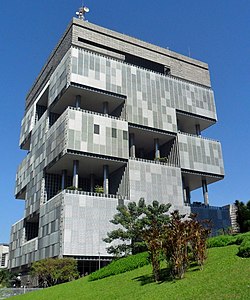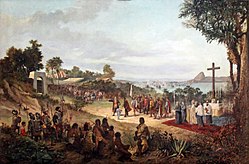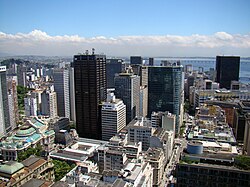The following outline is provided as an overview of and topical guide to Rio de Janeiro:
Contents
- General reference
- Geography of Rio de Janeiro
- Location of Rio de Janeiro
- Environment of Rio de Janeiro
- Areas of Rio de Janeiro
- Locations in Rio de Janeiro
- Demographics of Rio de Janeiro
- Government and politics of Rio de Janeiro
- Law and order in Rio de Janeiro
- History of Rio de Janeiro
- History of Rio de Janeiro, by period or event
- History of Rio de Janeiro, by subject
- Culture of Rio de Janeiro
- Arts in Rio de Janeiro
- Religion in Rio de Janeiro
- Sports in Rio de Janeiro
- Economy and infrastructure of Rio de Janeiro
- Transportation in Rio de Janeiro
- Education in Rio de Janeiro
- See also
- References
- External links
Rio de Janeiro – capital and most populous city of Rio de Janeiro state, and the second most populous city in Brazil, Rio de Janeiro was founded in 1565 by the Portuguese as part of the Portuguese Empire. It was the capital and political center of Brazil, where events like the Proclamation of the Republic took place. Brasília overtook Rio de Janeiro as the new capital of Brazil in 1960. Rio de Janeiro is known for its cultural riches, such as Carnival, samba and bossa nova, beaches such as Copacabana and Ipanema, and also for the Christ the Redeemer statue overlooking the city. Major education institutions include the Federal University of Rio de Janeiro, the Rio de Janeiro State University, and Colégio Pedro II.








































